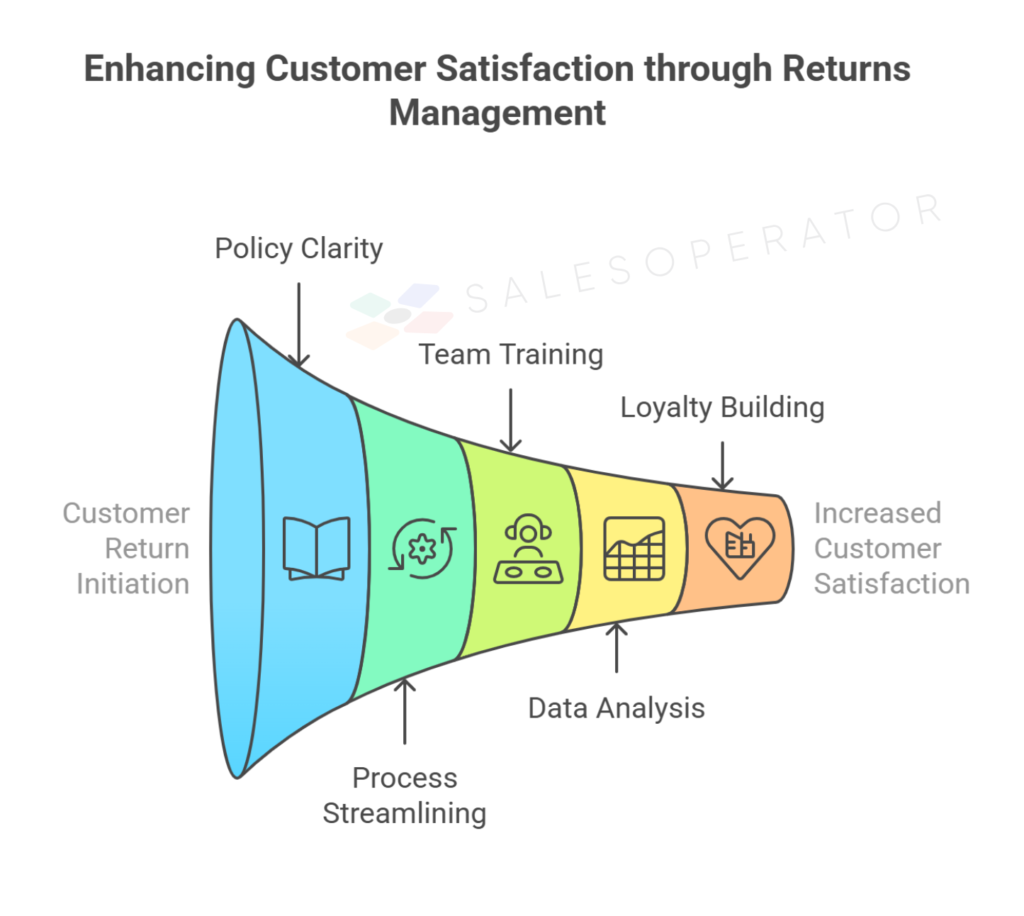In today’s fast-paced world of e-commerce, handling returns gracefully is crucial. Not only do returns affect your bottom line, but they also play a major role in shaping customer satisfaction and loyalty. In this guide, we’ll show you how to handle product returns in ecommerce with smart strategies and tips for reducing product returns effectively. By applying these techniques, you can turn potential setbacks into opportunities for long-term success.
Clear Return Policies Make a Difference
A strong return policy is the foundation for effective handling returns. Your customers need to understand the process without confusion. A clear and accessible policy builds trust. When customers know what to expect, customer returns are less likely to turn into negative experiences.
- Make your return policy easy to find on your website, product pages, and checkout screen.
- Set a reasonable return window, such as 30 days in unused condition. This timeframe is standard, yet flexibility for special cases can enhance goodwill.
- Offer options for a refund, exchange, or store credit. For instance, a clothing retailer may allow free exchanges for size issues. If the size is unavailable, they offer store credit or a full refund.
Streamlining the Return Process
The smoother the process, the happier your customers will be. A hassle-free return process is a win for both customer satisfaction and cost management.
- Provide prepaid return labels when possible. This convenience simplifies handling returns for your customers.
- Implement an online return portal that allows customers to initiate returns and track progress in real time. Automation in this process reduces waiting times and potential errors.
- Ensure that your support team is trained to manage customer returns with empathy and efficiency. Quick responses and proactive problem solving can transform a negative situation into a positive experience.
For example, an online electronics store uses an automated system that lets customers print return labels directly from their website. Customers also receive real-time tracking updates, making the process seamless and transparent.
Training Your Support Team
Your customer support team is on the front line of handling returns. Their attitude and response can make a big difference.
- Train your support agents to empathize with customers. Listening carefully to concerns and handling issues with care turns a return into an opportunity for loyalty.
- Consider offering small incentives, such as discounts, to prevent a return due to minor issues.
- Respond promptly to return requests to reassure customers that their issues are being handled swiftly.
For instance, a beauty brand once encountered a situation where a customer received a damaged product. Instead of insisting on a return, the company provided a full refund and sent a replacement immediately. This proactive approach not only solved the problem but also strengthened customer loyalty.
Analyzing Return Reasons for Future Improvements
Understanding why customers initiate returns is essential in handling returns effectively. By analyzing the reasons behind customer returns, you can identify recurring issues and make necessary adjustments to improve overall product quality and customer experience.
- Track return data meticulously. Identify common reasons such as incorrect sizing, damaged items, or misleading product descriptions.
- Improve product descriptions and images. Clear, high-quality visuals and detailed information can help set the right expectations, reducing the likelihood of returns.
- Enhance quality control processes. If a particular product sees frequent returns, it might be time to review and improve the product quality.
For example, an online shoe retailer discovered that a specific sneaker model had a high return rate due to inconsistent sizing. After updating their size guide with customer feedback, returns dropped by 30%, resulting in increased customer satisfaction and fewer customer returns.
Turning Returns into Loyalty Opportunities
Returns don’t have to be the end of a customer relationship. They can be used to build trust and turn a potentially negative experience into a positive one.
- Offer incentives for future purchases. For example, after processing a return, provide a discount on the customer’s next purchase to encourage them to shop again.
- Personalize follow-up communications. Send tailored recommendations based on the customer’s previous purchases or browsing behavior.
- Express gratitude. A simple thank-you note or a discount code in the follow-up email can make customers feel valued, reducing the negative impact of a return.
Imagine a home decor brand that offers a 10% discount on the next order after a return. This gesture not only compensates for any inconvenience but also encourages repeat business.

FAQs on Handling Returns and Customer Returns
Q: What is the best way to handle product returns in ecommerce?
A: Start with a clear, easy-to-find return policy. Ensure your return process is seamless by offering prepaid labels, online tracking, and a responsive support team.
Q: How can I reduce customer returns?
A: Use detailed product descriptions and high-quality images to set clear expectations. Monitor return data to identify issues and improve product quality.
Q: What are some tips for reducing product returns effectively?
A: Offer personalized support, provide quick responses to return inquiries, and turn returns into opportunities by offering incentives for future purchases.
Q: How do clear return policies affect customer satisfaction?
A: They build trust and transparency. When customers know exactly how the return process works, they are more likely to feel confident in their purchase decisions.
Final Thoughts
Handling returns effectively is essential for maintaining customer satisfaction and reducing customer returns. By implementing these strategies, you not only resolve issues quickly but also enhance the overall shopping experience. A clear return policy, streamlined processes, empathetic customer support, and data-driven improvements can turn returns into opportunities for customer loyalty and growth. Embrace these tips for reducing product returns effectively and watch your business thrive in the competitive world of ecommerce.




